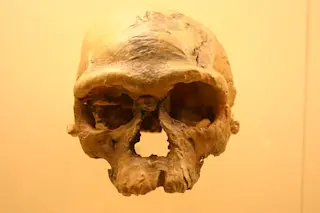The wealth of new paleoanthropological, archaeological and genetic evidence has passed the tipping point: In a review published today in the prestigious journal Science, researchers acknowledge that the conventional timeline of human migration out of Africa “can no longer be considered valid.”
The idea of an African homeland for our species is less than a century old, rooted in the discovery of early hominin fossils in South Africa in the ’20s and championed by individuals such as Raymond Dart, who were initially dismissed and even ridiculed. Then more fossils were unearthed, particularly in eastern Africa, and the general consensus shifted. In the span of a couple decades or so, the idea that Homo sapiensevolved in Africa went from fringe theory to mainstream thinking*.
(*That said, there is a minority in the field, particularly researchers in East Asia, who believe no single location can claim to be the cradle of humanity. ...














